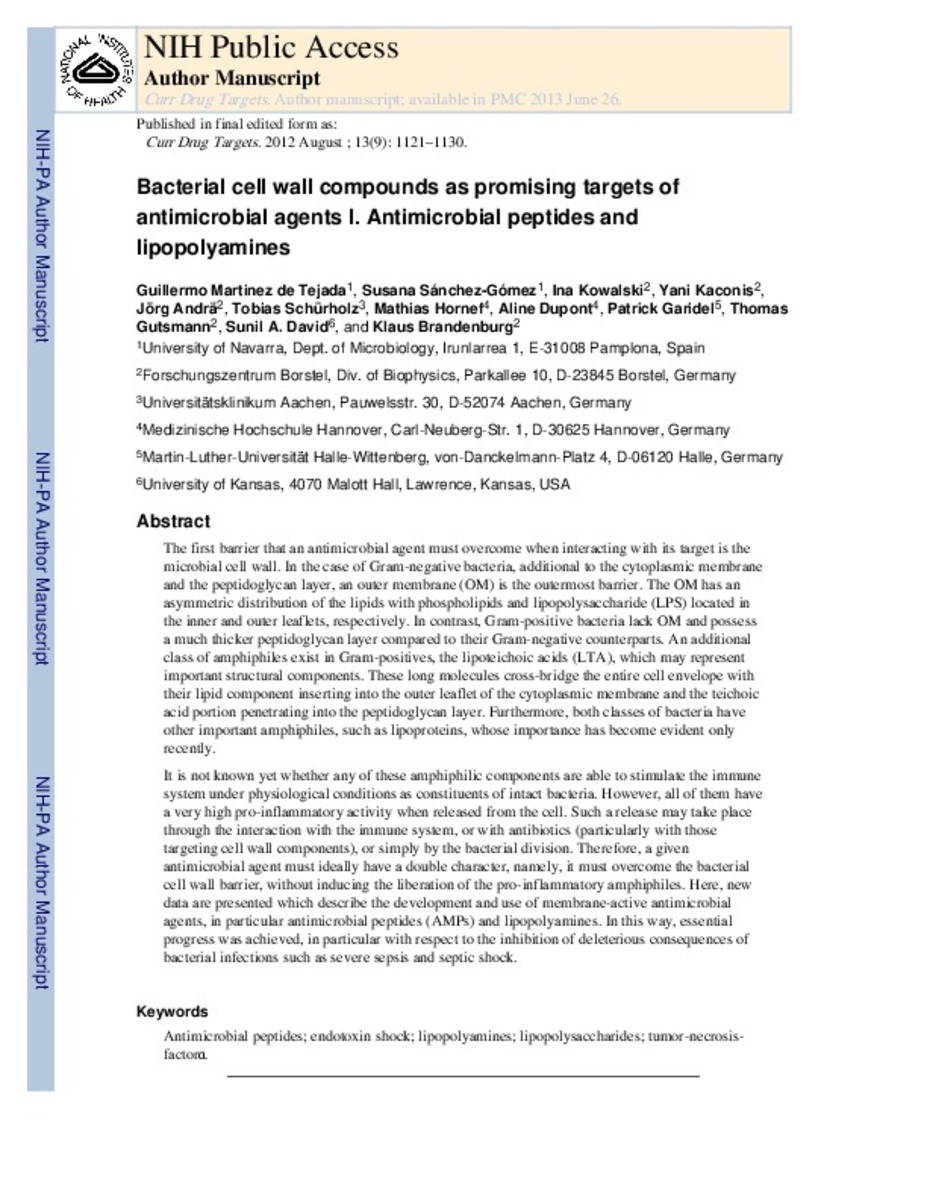Bacterial cell wall compounds as promising targets of antimicrobial agents I. Antimicrobial peptides and lipopolyamines
Keywords:
Antimicrobial peptides
Endotoxin shock
Lipopolyamines
Lipopolysaccharides
Tumor-necrosis-factor-alfa
Publisher:
Bentham Science
Citation:
Martinez de Tejada G, Sanchez-Gomez S, Razquin-Olazaran I, Kowalski I, Kaconis Y, Heinbockel L, et al. Bacterial cell wall compounds as promising targets of antimicrobial agents I. Antimicrobial peptides and lipopolyamines. Curr Drug Targets 2012 Aug;13(9):1121-1130.
Statistics and impact
0 citas en

0 citas en

Items in Dadun are protected by copyright, with all rights reserved, unless otherwise indicated.







